Citrus Oleo-Saccharum
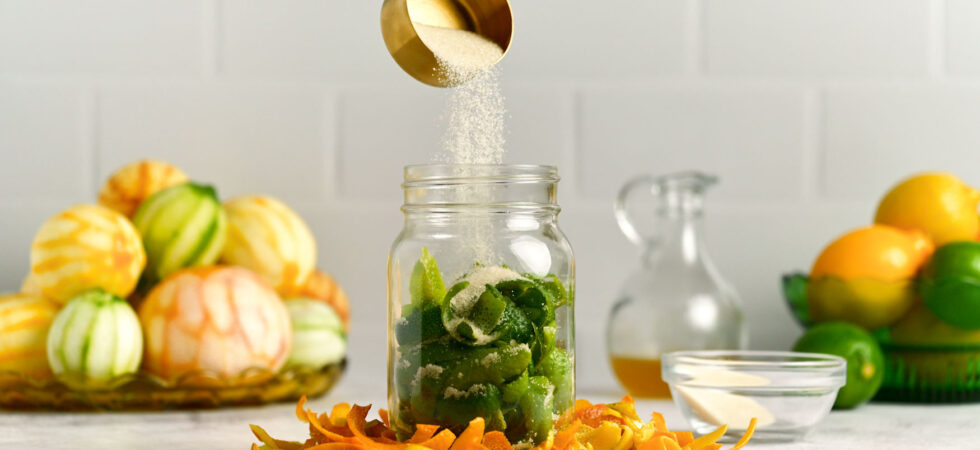
Citrus Oleo-Saccharum (OH-le-oh SAK-kah-rum), Latin for oil-sugar, is a great way to use every part of your citrus. It’s really easy to make and, although it takes some time, 99% of the work is passive. Less food waste and more flavor? Sign me up!
The final product really adds a delightful punch of flavor to recipes. Think margaritas and vinaigrettes; really, your imagination is the only thing stopping you!
Quick disclaimer, before you feel disappointed by the amount of oleo-saccharum produced from each batch of peels. You are meant to use this sugared citrus oil the way you use spices in a dish; a little goes a long way. Also, you made something delicious out of what typically goes in the trash. Pretty cool, no?!
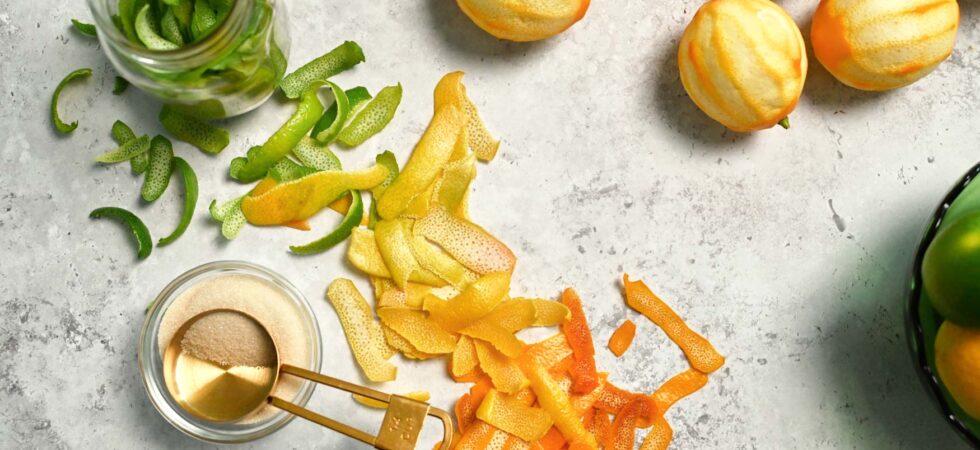
Get the Recipe: Citrus Oleo-Saccharum
Ingredients
- 1 cup citrus peel, (see notes for different fruit varieties)
- ¼ cup superfine (caster or baking) sugar, (see FAQs to make superfine sugar)
Equipment
- vegetable peeler (Y-peeler preferred)
- kitchen scale (optional, but reccomended)
- non-reactive bowl or jar
- measuring Cups
- Fine Mesh Strainer
- vacuum sealer (optional)
Instructions
- First, begin by washing your citrus.
- Next, peel them and place the peels in a non-reactive bowl or jar. Try to keep the peels as free from pith (the white fibrous layer under the skin but before the pulp) as much as possible.
- Gently mix in an equal amount of sugar, by weight, to the peels. The sugar will quickly become sandy and stick to the peels. (optional: also gently muddle the peel and sugar mixture after about 10 minutes on the counter) Let the mixture sit for 24 hours at room temperature.
- The sugared oil left over is your oleo-saccharum. Strain the syrup into a sealed container and refrigerate for up to a week.
Notes
- To get 1 cup (60-65g) of peels you will need roughly: 6 lemons; 7-9 limes; or 3 grapefruits. Unfortunately, I can’t give a good estimate for oranges. They vary so much in size, depending on varietal, that it’s really impossible to say. Your best bet is to compare the oranges you buy to the size of the other fruit listed.
- Play around with ingredient ratios! I use a 1:1 ratio by weight, as is traditional, but you can add much more sugar for a gently-citrusy syrup.
- Oleo-saccharum yield also varies by fruit. Lemon peels make the most with between 1 1/2-2 ounces (45-60ml). Grapefruit and/or orange peels came in second place with 1-1 1/2 ounces (30-45ml) And, last but not least, lime peels only create about 1/2-1 ounce (15-30ml) of sugared oil.
Nutrition
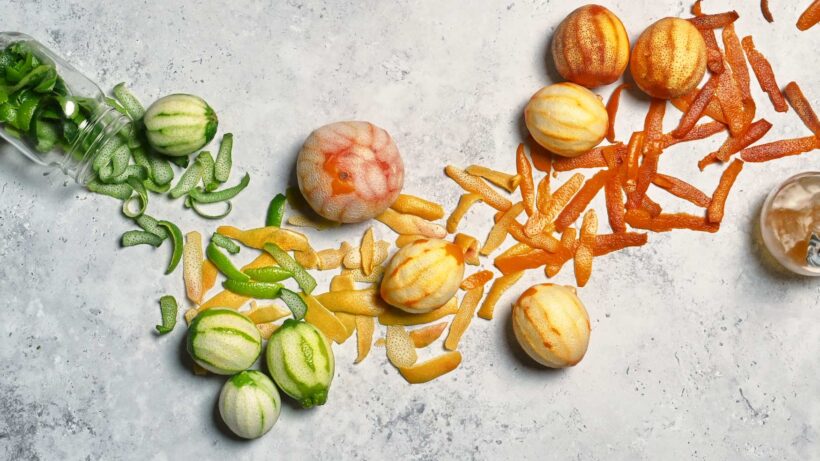
Frequently Asked Questions
If you want to be a little extra, my favorite way to make oleo-saccharum is actually with a vacuum sealer. To me, the final product is sweeter and brighter (more infused) than what I could produce with maceration in a bowl. This method is also twice as fast (done in 4-12 hours). Of note: this will not produce more oleo-saccharum. The only way to do that is to use more ingredients. Sorry!
To do the vacuum sealer method (popularized by Jeffrey Morgenthaler) follow the same instructions as above, but after the 10 minute mix and rest, add all of the ingredients to a vacuum seal bag and use your sealer as instructed. You can also store this in the fridge, as is, until you are ready to use it. There is no air to oxidize with the citrus peels and turn them brown. It will stay fresh as long as the bag is sealed.
The names kind of speak for themselves. Superfine sugar has a finer crystal structure than granulated sugar. Superfine sugar also breaks down faster and infuses better than granulated sugar, so you will have more final product. They also weigh different amounts so be careful when substituting them and using volume measurements like 1 cup. 1 cup of granulated sugar weighs 200g and 1 cup of superfine sugar weighs 220g. So, if you decide to use granulated sugar in this recipe, you’ll need roughly 1/3 cup to replace the 1/4 cup of superfine sugar.
While this type of sugar is more prevalent in European countries, you can still find it in some American supermarkets. If you don’t want to go search for superfine sugar (also sometimes labeled baking sugar), don’t worry! You can make it at home in your food processor. First, measure and pour granulated sugar into your food processor. Then pulse the sugar until the granules have been reduced to the size of grains of sand. And, that’s it!
A non-reactive vessel is made of any material that won’t discolor, won’t become pitted over time, and/or won’t leach its flavor into your food when you cook with acidic or alkaline ingredients. Materials to avoid with these ingredients are: non-food-grade plastic; unlined tin; unlined copper; raw aluminum; and unseasoned cast iron. Materials that are non-reactive are: glass; ceramic; most enameled metals; food-grade plastic; and stainless steel.
Pith is bitter. If you have too much of it in your oleo-saccharum mixture or really in any application that zest/peel is used, you will lose that beautifully intense sweet, citrusy flavor.
From my experimentation with this recipe, limes seem to be the hardest citrus to peel without pith hitching a ride. To combat this, I have two suggestions:
1. Use a Y-peeler: They are gentler on the rind than a traditional swivel peeler. Additionally, to pull top-down and not left-right or right-left, is a more natural and smoother movement.
2. Don’t agitate the mix too much: It’s okay to have some pith, but much like herbs, the more you crush peels the more bitter they become. I promise, you will feel a compulsion to squeeze or muddle as much oleo-saccharum out of each batch as possible; especially because there is so little in each one. But, the best results come if you let time do its job and leave the ingredients to marry on their own. The more you stay out of the process, the sweeter and more fragrant the sugared-oil will be. P.S. I’ll cover ways to use every last drop of oil without the need to mash or squeeze the peels later on. I got you! 😉
If you want a peak flavor oleo-saccharum with most of the sugar dissolved, unfortunately, yes. If you don’t mind having a sweeter, less citrusy syrup, then 6 hours will do. Using a vacuum sealer is the only way I’ve found to cut time and not lose flavor.
You can incorporate oleo-saccharum into a recipe by making a citrus simple syrup (add warm water) or a cocktail sherbet – no, not that kind of sherbet – (add citrus juice).
The liquid added in both of these options, does two wonderful things:
1. It adds volume to the sugared-oil, so you have more to go around.
2. The oils, which would have been left stuck to the peels and bowl, loosen and mix into the liquid. Can you say, “no-waste win!?”
It’s really up to you! Most recipes would dictate about 1/4 cup (60ml) of liquid for a 1:1:1 ratio by ingredient weight. For a simple syrup, very warm water should be added directly to the oleo-saccharum. The warm water dissolves any leftover sugar crystals. Fresh citrus juice is added for a citrus sherbet. With a sherbet, the acid in the juice takes care of any leftover sugar crystals.
While this is a good starting point, I’d also consider the output of each citrus. 2oz (60ml) of lemon juice added to 2oz (60ml) of lemon oleo-saccharum is a much different combination than 2oz of lime juice added to the 1/2oz (15ml) of oleo-saccharum supplied by lime peels. For lime margaritas, I actually prefer adding 1.5oz (45ml) of lime juice to my lime oleo-saccharum instead of 2oz (60ml) lime juice. It’s really up to you to figure out where your tastes lie. Start at 1:1:1 the first time and tinker to your heart’s content.
Oh yeah! Candy them! Eventually, I’ll make a whole recipe for this. For now, here you go:
On the stove top, add 1/2c (120g/ml) of sugar and water to a 12in (30.5cm) sauté or fry pan. Turn the burner to medium heat and stir until the sugar is completely dissolved.
Once that is done, turn the heat to low and add in the citrus peels. Let them simmer for 60+ minutes, stirring them every 20 minutes or so during the process.
Before the peels are done, prep a baking sheet by covering it with aluminum foil and setting a cooling rack on top of it.
When the syrup loses enough water, it will bubble and become sandy. Once you notice this, give the peels a last mix to make sure they are fully covered with the hot syrup. Turn off the burner and dump the peels onto the rack. They should dry and crystalize fully in minutes.
Quick note: If you want to do this, start immediately, after draining or using the syrup

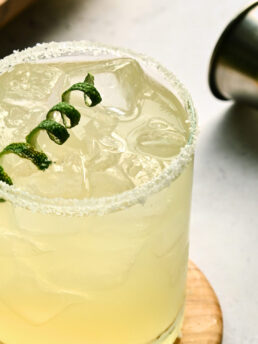
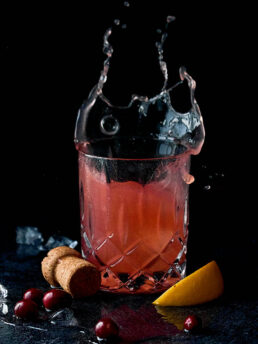

Super easy to make thanks to the pin point instructions laid out by the goat herself
Awww, thanks Kenny! It’s always nice to hear from you! Glad you liked the recipe. ☺️